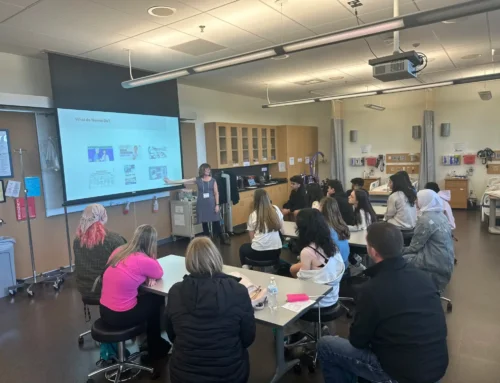Hey all! Ed here.
Fall is upon us, and we can see and feel the change in the air. Here in the Pacific Northwest, the various fall festivals are kicking off, and we notice the change in the weather bringing a chill to end the busy summer. I wish things would slow down a bit, but as Geoffrey Chaucer said, “Time and tide wait for no man.”
With the start of a new school year, I find myself thinking about what it takes for our youth to be ready to face the challenges out in the “real world” as they transition to life outside of high school. I must be honest; these thoughts leave me feeling overwhelmed. How did we all make it through that stage in our lives?
I need to look at the facts, as I know they are a better guide than my feelings.
Fact: We made it through and are here to tell the story.
Another fact: The students we serve will not only survive this time in their lives but with your help will truly thrive! (Read on for some tips…).
So how do we help them do it? I have not been the only one to ask this question.
People much smarter than me over at MIT have been studying this issue, and they have identified Ten Tasks of Adolescent Development that have helped me navigate some things with my own son, Ed Junior. Also, our own Washington State Board of Education has an awesome Q&A section about the High School and Beyond Plan that will help shed some light on what is expected of schools and students. Students will rise to the challenges we put before them.
Some of you may be thinking, “but my students need extra help, and I don’t have the time to create all the lessons it would take to cover what they need to know.”
Fear not!
There is an OSPI-approved free curriculum for grades 6-12 that covers everything from time management and self-advocacy to personal finance and how to complete the FAFSA.
Also, while Khan Academy is famous for math, it also has an incredibly helpful “Life Skills” section that covers things like social media literacy, careers and college admissions.
If your student has an IEP or 504 plan, this year there are services available through the Pre-Employment Transition Services (Pre-ETS) program, where all sorts of future prep is taking place. Through Pre-ETS, students 14 and older can participate in college and job site tours throughout the region. For those between the ages of 16 and 21, there are 40-to-120-hour paid internships through local business partnerships.
There are many resources available with a quick online search. Reach out to your colleagues to see how they are navigating their students’ needs for the next step.
Finally, I figured that since many students are using AI and ChatGPT, I would try it to see what it recommended. Here’s a summary of what it said regarding students transitioning to adulthood: “Educators hold a unique position in shaping the future of our students as they transition to adulthood. By focusing on academic preparedness, career guidance, social and emotional development, financial literacy, civic engagement, and continued support, we can help our students navigate this critical phase with confidence and resilience. As educators, it is our privilege and responsibility to prepare the next generation for the challenges and opportunities that await them in the adult world.”
That advice is not too bad!
Fear dissipates with truth and knowledge. Thinking back to how I was as a young student trying to figure out my life, what truly made an impact was the positive people around me and their efforts in my life.
Since you are reading this and have deep concern for the next generation you are choosing to serve, I say their transitions are in good hands.
Here’s to their future!




